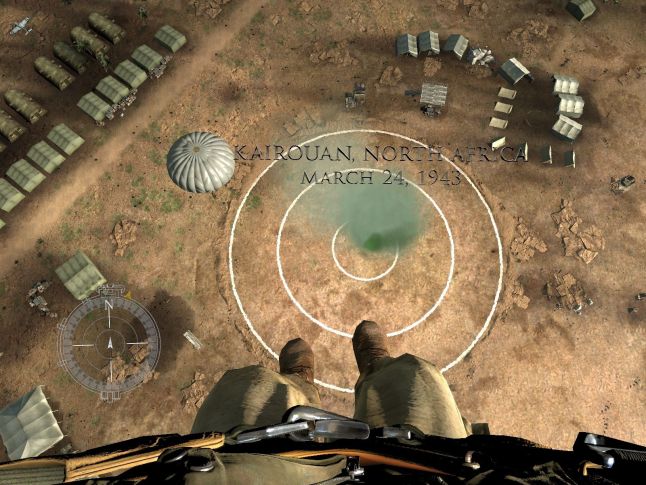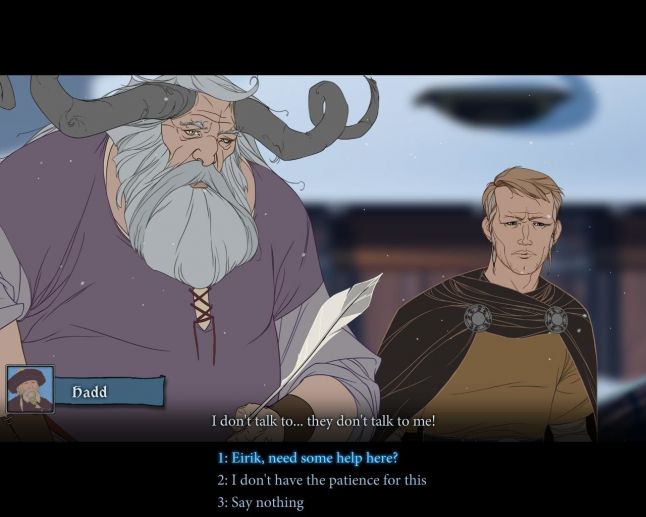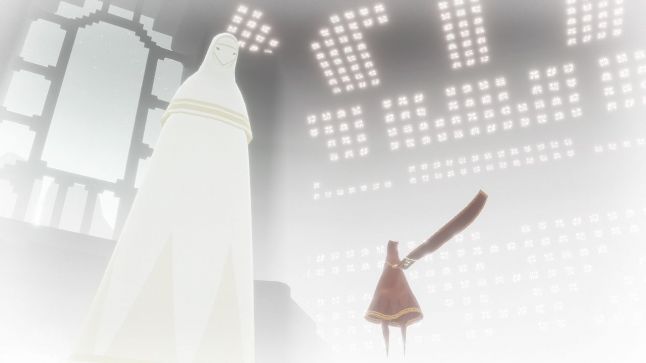How a non-refundable cost error can ruin a game developer

Sometimes when developing games there are difficulties - technical problems appear, design turns out to be beautiful only in theory, decisions made at the early stages lead to difficulties later. Such is the reality of this craft - in the process of creation there are mistakes and failures.
But what if you don’t want to admit that a function or project needs to be changed or even abandoned completely?
It is natural for a person to become attached to the results of his labor. When writing books, this is called “murder of loved ones” - we have to get rid of unnecessary passages and phrases that were invented with love, but as a result turned out to be excessive or interfering with the plot.
')
And in game development, you also have to learn to cut out all too ambitious, non-working and selfish. If this is not done ... then, as we shall see, the problem will drag the project down with it and may even lead to a disastrous financial situation of the company. This is especially true when admitting one’s mistake means having to invest a large amount of additional labor.
Economists call this a non-refundable cost error or a Concorde error (in memory of the development of the Concorde supersonic passenger aircraft). This is an irrational increase, in which a person feels that he has invested a lot of money / time / energy in work and its termination will be a waste of resources. However, in reality, the decision to continue should not be in any way connected with previous spending; the most important thing is to understand whether additional efforts will justify themselves.
We asked a dozen developers to talk about their experiences of irretrievable loss errors in the projects they were working on. Here are the stories they wanted to share. They all serve as an important reminder that every developer must constantly perform a cost / benefit analysis and take decisive action in the event of unpleasant conclusions.
Do not see the trees behind the forest
Co-founder of CloudGate Studios, Steve Bowler, recalls the huge cost of trying to implement a function that should not even have been in the game when developing the NBA Ballers: Phenom . Steve worked as an animator at Midway at the time.
“At that time, the open world became a new and very popular" chip, "he recalls. " Grand Theft Auto III just came out and everyone was eager to invent open world games."
The first part of the Ballers was fairly straightforward - just street basketball games one by one, each in its own environment, connected by plot cutscenes. Bowler says the sequel should have been a walk-through project for making money with new game modes and some additions.
But the company instead decided to force a team that had never created open worlds before, to implement them in a licensed NBA street basketball game.
NBA Ballers: Phenom
“Every step in the development process was a failure. For example, as soon as we set up the driving system, the NBA intervened and said that players should not put pressure on anyone on the road, because NBA is a family brand. Instead of abandoning the function of driving a car that was initially unnecessary, the team spent too much time for the NPCs to learn how to jump out of the way. ”
“The developers spent a lot of time trying to create an open world, until the company finally gave up and made it isometric. Now it was more like a menu where you could walk, ”says Bowler. “And even after that, he seemed ill-conceived; and in general, initially it was not worth striving for its implementation. ”
Exciting Lost Labor Disasters
One of the founders of Interplay, Rebecca Heineman, told us that she could share the nightmarish stories about the irrevocable costs in which she had participated or had seen. However, she decided to tell the two most loved ones.
“For Interplay’s Stonekeep game, several hours of live video was recorded. The filming took place outdoors, ”she recalls.
But no one thought about the daytime movement of the sun, because of which the shadows galloped sharply as they went from scene to scene. "The developers thought that they could fix the schedule in a matter of days, but it took 75 artists over a year to fix all the records frame by frame."

Stonekeep
A dozen years later, Rebecca watched from afar as the publisher's intervention prevented her friend Mark Docktermann from leading the technical side of Medal of Honor: Airborne .
“The game was developed on the version of the Quake III engine of Ritual, but the team had to replace it with the Renderware engine, because EA bought this company and wanted to use the engine for its products,” Heineman explains.
Doktermann explained that they switched to consoles that year, and Renderware convinced EA that Renderware 4.0 could provide Next Gen tools and capabilities. The problem was that nothing was ready yet, and the whole process turned into a majestic and prolonged disaster of the labor spent.
After about 16 months of working with the Renderware engine, the developers finally gave up and switched to Unreal 3. They spent less than a year on finishing the game.

Medal of Honor: Airborne
Never gonna give you up
The developer of The Banner Saga Stoic made a terrible mistake, twice falling into the trap of sunk costs - the first time when porting to the console, and then when creating a later canceled port for Vita. The co-owner and technical director of the studio, John Watson, admits his mistake - he thought that, despite several deadlines that had been broken by the port development company, they were “almost finished”, and therefore it is worth while to suffer.
The full scale of the problem became apparent when the game porting company went out of business after a year of working on the project. Watson says that the failure of the port on the console cost about one hundred thousand dollars, and although part of the work was used when another company started developing the port, these 100k could definitely be spent more profitably.
With the port project on Vita everything was more complicated. Initially, it was to be developed by the first company in January 2015, but the project was suspended in the air when this company collapsed in May.
“After this crisis and the re-launch of the project on porting to the console, the new company did not rush to take on the port for Vita,” says Watson. “The developers felt that The Banner Saga was a big risk in terms of performance and required significant changes in the GUI. They believed that the development will be too expensive and time consuming, and therefore will not be repaid. Therefore, we decided to cut off the oxygen to this port. But then Sony commissioned another port development company to take it. ”
For more than a year, this third team, Code Mystics, struggled with the difficulties of its own game engine (which it was impossible to test until the port reached a playable state). When they managed to launch the game, its terrible speed on the Vita hardware forced Stoic, Sony, Code Mystics and the game publisher for Vita Versus Evil to make a mutual decision to stop the project. They all just wanted to make the game work, but, according to Watson, "this just wasn't going to happen."

The banner saga
Overlooked alarms
Experienced programmer Glenda Adams recalls the long-suffering project of porting games to Macs in the early 2000s. Ported the game EA Need for Speed: Porsche , and from the very beginning of the work a lot of bad omens appeared. EA refused to transfer certain parts of the game's source code to the Aspyr port company.
“We agreed to port all the code available to us, and then EA had to introduce us to its own programmer, so that he wrote the Mac library for those parts that we could not see,” explains Adams.
For almost a year, the team tried to work without being able to debug a huge part of the code (the part that was closed by EA, plus the systems interacting with it).
“Over time, we realized that nothing would work out and interrupted the work, but the adoption of such a decision was reminiscent of agony,” continues Adams. “And we have postponed it for much longer than necessary. In fact, it was necessary to immediately abandon the project, as soon as we saw the obstacles we face. ”
"But at first we were optimistic, because from the point of view of porting, we worked on top of the EA game and could make it work."

Need For Speed: Porsche Unleashed
The designer Puzzle Quest, Warlords Battlecry and Gems of War Steve Fokner also have a similar story, when at the very beginning of developer and publisher cooperation all the “red flags” were ignored. Fockner recalls how the publisher said that the studio did not meet the deadline and delayed payment in the middle of the project.
“We began to spend our own money trying to reach the next payment,” he recalls. The investment seemed to be an investment in order to generate income in the future, so we considered this solution rational. However, a month later, after re-delivering part of the project, the publisher paid only half and offered an increased percentage of contributions as compensation.
“At that moment I should have realized what was going on, and just put an end to it all,” says Fochner. Now he realizes that this was a clear signal, testifying to the huge financial problems of the publisher. “But I was younger and more naive,” says Steve. "So I decided - we will get our way!"
“Over the next six months, payments became less and less, but we continued to wait for them. Reports of failed deadlines were becoming more strange and picky, but we dealt with them. We laid off workers, cut wages, but continued to carry out the development stages, because by that time more money was spent on the project than the publisher himself! ”
Worse, in this way, developers, exhausted by constant demands and financial stress, stopped playing their own game. “From a fresh look at a familiar topic, the game turned into a Frankenstein monster, which was not interesting to anyone,” says Fochner. "But we did not notice."
And even when the payments completely stopped, the company continued to work on the game for another six months, after which Fochner finally canceled the project. “Our studio was destroyed, there were three employees left,” he recalls. "We managed to survive and recover, having received a very important lesson."
Indie studios can also confuse unsung or ignored alarms. The creative director of Voxel Agents, Simon Joslin, understood this with the example of the Toy Mania puzzle. His studio spent six months developing this project as a game on Facebook - at first only Simon was on the team, then an artist and a programmer joined him. The warning signals were that the gameplay was falling apart at the soft-launch stage, but Joslin decided to continue working for another six months.
They collected data and tried to use it to improve the game and its impressions (marketing materials, quality of work in different browsers, etc.), but did not heed what the data warned about - the game still did not work. This led to even more wasted effort - now the gameplay has changed, and the basic mechanics have become more complex and less accessible to users.
“After several months of unsuccessful work of the game on Facebook, we decided that it definitely should be transferred to mobile,” Joslin says. The whole team started working on the mobile version and spent several months optimizing it for the Android audience. "Of course, she failed on mobile."
How to avoid a nightmare
Some developers have managed to find a way to avoid or reduce the impact of a non-recurring cost error. For example, Bowler says that in his current studio, CloudGate, developers usually change tasks when someone stumbles upon a problem that he cannot solve. This helps them to be “brutally honest” about what does not work and not lose orientation. Jocelin of Voxel Agents learned to follow his instincts and create design on paper, and only then create cheap prototypes in order to have a clear vision of the future. This can not completely relieve the nightmares of irrevocable expenses, but helps in solving problems.
The founder of Funomena and the producer of Journey Robin Hanike can tell many stories about nightmares, which were avoided thanks to cheap prototypes and an open and honest atmosphere in the team. “In most of my stories, everything ended up fine,” she says. “It’s just that they have seemed like irrecoverable spending for a long time.”

Journey
And for thatgamecompany, and for Funomena salvation was the small size of the team. When thatgamecompany stubbornly sought to implement wall crawling mechanics on Journey , the team constantly iterated the idea on small prototypes, and did not go too early to complete the development of mechanics.
As a result, the studio's rejection of this idea and the transition to a system with a scarf and flags went to the benefit of the game. “The same thing happened with early prototypes of crawling and folding in Wattam and with physical and musical feedback systems that we developed for Luna ,” says Hanike.
“I think the designer should experiment and learn from his mistakes. Life is too short to hold on to bad ideas, but innovation takes courage and time to turn bad into good. ”
Source: https://habr.com/ru/post/345242/
All Articles